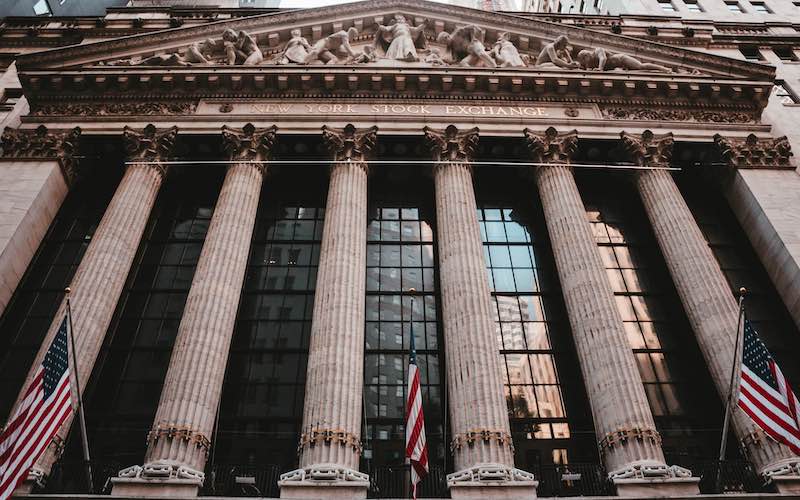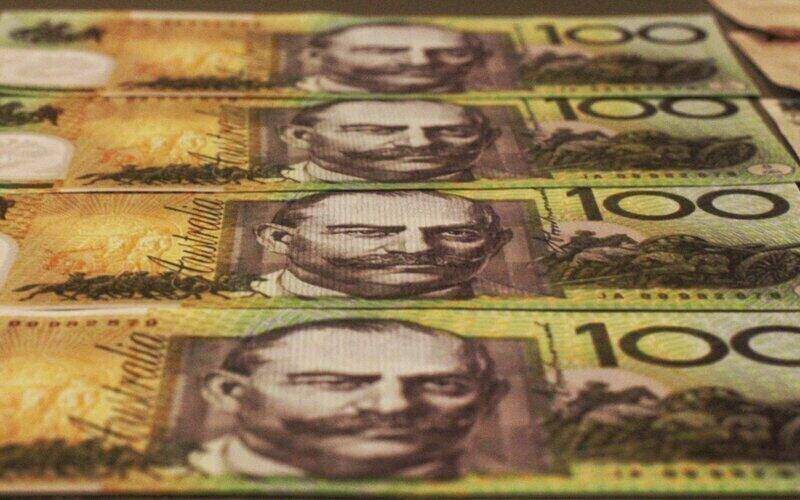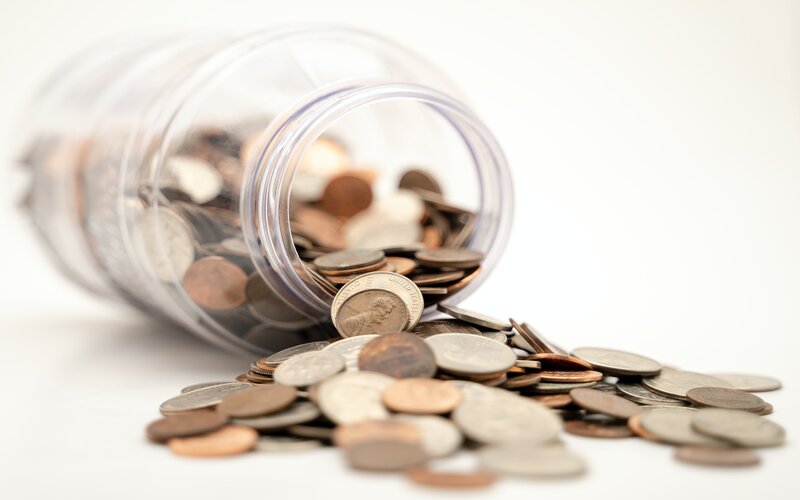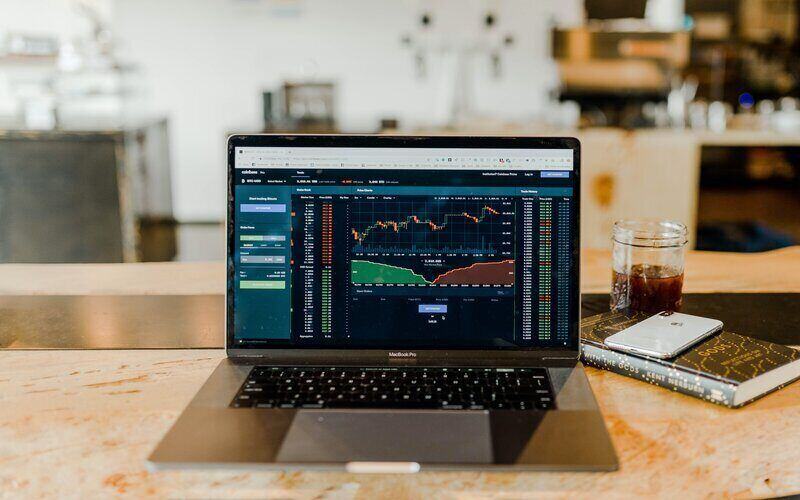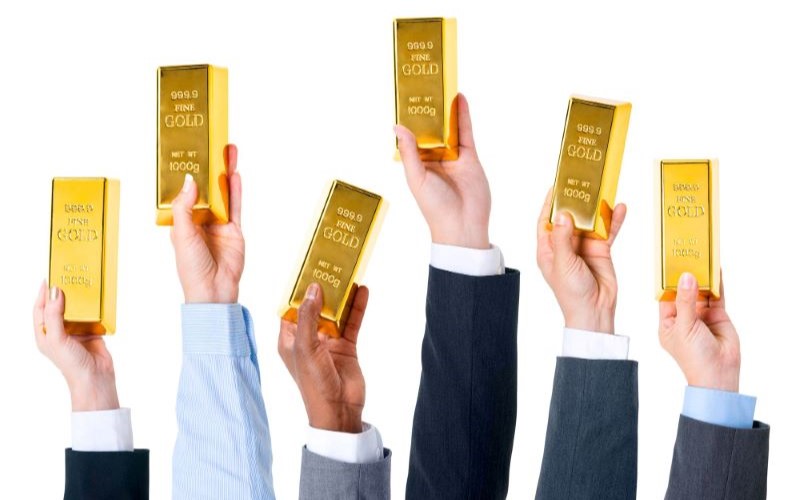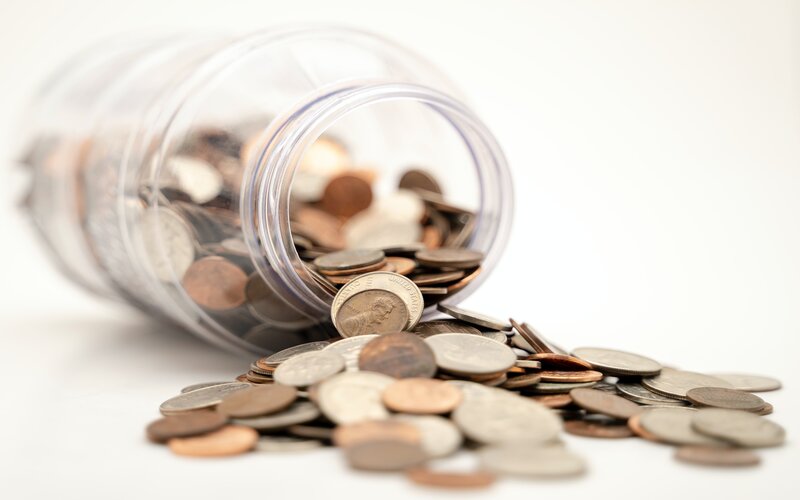First, we’re gonna throw a few stats at ya. And then second, we’ll explain what it all means. Annualised inflation from the December quarter of 2021 showed a 3.5% rise in the consumer price index, or CPI. This raised a few eyebrows given that inflation has been incredibly low for a long time.
What does it all mean? It can be important to know, because it can explain things like expensive groceries, fuel, and why your dollar is not going as far as before. Remember when your dad waxed lyrical about going to the milk bar and getting a milkshake for fifty cents? Yeah, that’s inflation.
Advertisement
Need somewhere to store cash and earn interest? The table below features savings accounts with some of the highest interest rates on the market.

- Bonus rate for the first 4 months from account opening
- No account keeping fees
- No minimum balance
What is inflation, and how is it measured?
The most commonly accepted way to measure inflation is through the Australian Bureau of Statistics' consumer price index, or CPI. The CPI is a quarterly-released measurement on a set basket of goods.
A colleague wrote a more thorough analysis of exactly what goes in the ABS' shopping basket.
This basket of goods has changed over time. For example, the 1970s' CPI had typewriters, while today there’s computers. Inflation has generally been quite low since the 1980s, in part because technology depreciates like crazy. How much was 8GB of RAM in 1998?
Property is excluded from the CPI, much to the chagrin of some pundits. This is because property consists of land and a building. You can’t technically consume land, however ‘housing’ is included - the building itself, rent, and any consumable items and costs. The main caveat here is that buildings generally depreciate.
Tobacco and alcohol are also included in the CPI, which is slightly controversial given they are highly taxed and the government increasing the excise every six months can cause inflation to go a bit funny, too. Speaking of governments, stimulus can also play a huge part. For example, in 2020 the Federal Government waived or heavily subsidised childcare costs for many families, but then in 2021 when those subsidies were switched off, the annual inflation rate shot up to 3.8%.
On the other hand, mid-2020 also saw ‘deflation’ as subsidies affected many products' prices in the ABS' ‘basket of goods’. Such tinkering around the edges led one economist to call headline CPI measurements “practically useless” - especially in a strange Covid economy where everything is up and down like a fiddler’s elbow.
This gives rise to a slightly different measurement - ‘trimmed mean inflation’.
See Also: The Gold Standard - Why Not Eliminate the Central Bank?
What is trimmed mean inflation?
Trimmed mean inflation is basically headline inflation minus the BS. It’s also called underlying inflation, and refers to trimming out the impact of irregular or temporary price changes.
Such ‘temporary’ measures include childcare subsidies as mentioned earlier, deferred rent policies, healthcare premium freezes, and so on.
Headline inflation can actually contain quite a bit of BS. For example, the annualised December quarter 2021 inflation was 3.5%. When the ABS took out its pruning scissors, the trimmed figure was 2.6%.
While there’s no exact science as to what the ABS will trim, keep an eye out for ‘temporary’ changes. For example, healthcare premiums usually rise in the June quarter - if they’re frozen that’s counted as ‘irregular’.

Why is CPI important?
Measuring CPI inflation is important because it provides a key benchmark to see how prices of goods are generally going. Inflation not only affects consumers at the servo pump and at the grocery checkout, but it’s also a key stat that policymakers like to look at.
Take the Reserve Bank of Australia for example. The RBA’s remit is to promote economic stability for Australia. One of its main goals is to keep inflation in a ‘healthy band’ - usually this is a ‘trimmed mean’ of 2-3%.
One way the RBA can influence inflation is to adjust the monetary supply. Note, this doesn’t mean literally printing or shredding banknotes. It can also lower the cash rate if it senses money is ‘too expensive’ and inflation too low, or raise the cash rate if inflation is running too hot and money ‘too cheap’.
Think about it like salt and vinegar chips - if you had 1kg of the stuff, would you value it less? What if you had only 50g? There’s a fair bet you’d savour every bite, but every bite is more 'expensive'.
Until recently, the RBA missed its inflation target every quarter for more than six years. Higher inflation also generally devalues the currency on international exchange markets. The RBA likes the Aussie Dollar’s ‘fair value’ somewhere in the low-USD 60c range - the Reserve Bank has repeatedly missed this too.
Being a central banker is hard.
Inflation between 2-3% is important because it is one of the key metrics the RBA looks at when deciding whether to push its cash rate up. RBA Governor Dr Philip Lowe has repeatedly maintained that the Bank would not increase the cash rate until inflation is ‘sustainably’ within this band. However, he has also said there is no specific definition as to what ‘sustainably’ means.
In contrast, CommBank economists forecast a trimmed mean inflation of 3.3% by the end of 2022, and a cash rate of 1.25% in 2023.
Increasing the cash rate generally has a few consequences. Wholesale funding costs increase for everyone across the board - making money more ‘expensive’. Banks for example will generally increase home loan interest rates, and also increase rates on term deposits and savings accounts. Good news for savers, not so good news for borrowers.
What does rising inflation actually mean for the consumer?
It can be hard to swallow when eggheads on the TV say inflation is a 'low' 3%. Fuel is $2 a litre, a carton of VB is suddenly fifty bucks, avocados $3 and rump steak $30 for a kilo. And yet you still somehow can’t get beef mince or toilet paper at your local Coles or Woolies.
However, the basket of goods is wide and varied, and certain products such as technology depreciate in value, which weigh on the index.
Most people shop for groceries and fill the car up weekly, and don’t necessarily shop for a computer as often, so that’s where they’ll notice the pinch.
There are two large influences on the latest crop of inflation: monetary supply, and supply chain issues. As mentioned earlier, the RBA 'printed' in excess of $300 billion in money - that rise in the monetary supply devalues money, like that chips analogy we mentioned earlier.
The second one is supply chain issues. This is because a lot of Covid cases and self-isolation measures have forced workers to take time off. That means fewer truckies, wharfies, shelf stackers and so on delivering your goods.
Then you’ve got OPEC oil countries restricting supply of oil, plus our fuel cycles and wholesale fuel supply playing silly buggers, and you’ve got a ‘perfect storm’.
Inflation has been low in Australia for quite a while, but in other countries such as Turkey and Argentina, annual inflation has been running hot - in some cases more than 50% - which in a real-world scenario means prices change at the shop every day.
Nonetheless, despite these Covid-led oddities, certain items have appreciated in price over the years more than others.
See Also: When are we getting a pay rise?
Rising food prices - a breakdown
A data visualisation by economist Jason Murphy below shows the rise of food prices since 1990. Lamb and goat have shot up the charts, which in part can be explained by changing culinary tastes - lamb wasn’t considered a good cut of meat 30 years ago.
Beer is up there too, in large part because of government excises. Good old poultry has been pretty steady - feel like chicken tonight?
ABS data shows the adult median wage in 1994 was $1,250 per week (adjusted for inflation), while it’s $1,737 today.
So let’s talk about wages.
Food price rises since 1990. pic.twitter.com/z3Eb7W9PT6
— ☔Jason Murphy (@jasemurphy) February 2, 2022
Inflation vs Wages
On the other side of the coin, pardon the pun, is wages. Or rather, wage growth. Wage growth is another important metric the Reserve Bank looks at, and is an important indicator of economic health.
Wages growth - hopefully - moves with inflation, generally a percentage point or so ahead. However, since the Global Financial Crisis, wages growth has largely been flat.
If inflation steams ahead but wages are not carried with it, this means workers' real wages have fallen because their income now buys them fewer goods.
This scenario is usually a symptom of stagflation, where both inflation and unemployment is high. That’s something most central bankers, politicians, and society in general want to avoid.
The ABS also publishes a Wage Price Index, or WPI. No that’s not Whey Protein Isolate for you gym nerds. The RBA considers 3% annual wages growth to be a healthy yardstick.
One way to measure if your dollar is actually going backwards is through real wages. It’s a simple calculation - wages growth minus inflation.
The latest wages data came out at an annualised 2.2% for the September 2021 quarter, at a time when headline inflation was 3%. This implies a real wage decline of 0.8%. However, trimmed mean inflation at that time was just 1.6%, so real wages growth without the BS was 0.6%.
If you feel like your yearly pay rise (if you got one at all) didn’t really give much benefit, this could be why.
Impact on Savings
Savings is another one, and those who are looking to earn some interest on their money have been up s..t creek for a while now. Inflation is also effectively eating away any gains made.
A savings account is lucky to return more than 2% per annum, term deposits even lower. If trimmed mean annual inflation is 2.6%, that realistically means cash sat in a 2% p.a. savings account has lost 0.6% in value over a year.
Of course, we’re called Savings.com.au, so we’re not advocating you pull your money out of your bank account - having cash for a rainy day is incredibly useful.
However, this has made a lot of Australians pile their money into equities or other investments, which are riskier than a bank account.
“We’ve definitely seen a big spike in enquiries and applications from people who feel frustrated about the returns their savings are getting,” said Chris Brycki, CEO of investing platform Stockspot.
“For the younger generation saving up, investing is becoming more popular as an alternative to leaving money in the bank. It does come with some extra risks but they can be managed by having a well diversified portfolio, low fees and a time horizon of at least a few years.”
It affects older people, too. The deeming rate their pensions are assessed at is still too high according to some advocates. Higher inflation and low interest rates could also be making some retirees afraid to spend their cash.
Compare some of the highest savings account interest rates in the table below.

- Bonus rate for the first 4 months from account opening
- No account keeping fees
- No minimum balance
The bottom line
High inflation can drain consumer confidence and a household’s confidence to spend money. The most recent Westpac consumer confidence report - at the time of writing - shows a 1.3% pullback in confidence, dropping to 100.8. This was led by the category ‘finances versus a year ago’, which fell 9.2%.
“The most likely explanations for these elevated pressures on finances relate to: Omicron-related disruptions to activity and earnings at the start of the year; the rising cost of living; and the prospect of rising interest rates,” Westpac chief economist Bill Evans said.
High inflation affects household finances. When coupled with low wage growth, it essentially means your dollar doesn’t get you as far. You may not notice if milk goes from $1 a litre to $1.10 a litre - but rising prices of everyday items can have a big impact on your budget over time.
Photo by Emil Kalibradov on Unsplash







 Brooke Cooper
Brooke Cooper
 Rachel Horan
Rachel Horan